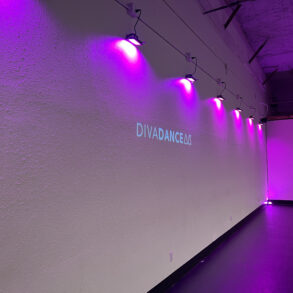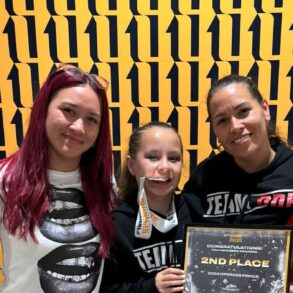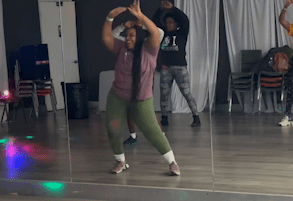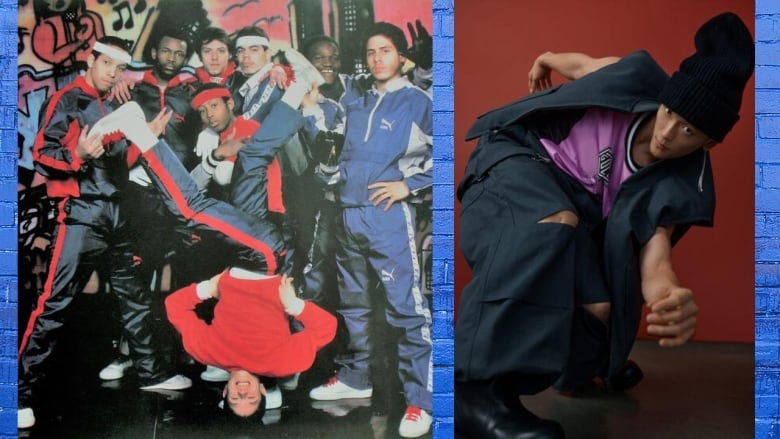
From its beginnings on Bronx street corners and in New York City clubs to today’s worldwide competitions, there’s no doubt that breakdancing’s popularity has grown exponentially over the last 40-plus years — as has its influence on fashion.
Being in the 40-something age bracket myself, I’ve witnessed first-hand how breaking has evolved from a niche dance genre to a sporting and cultural phenomenon.
I have fond memories of attempting moves like the backspin, worm and windmill with my cousins when we were kids. Although my dreams of becoming a world-renowned B-boy were quickly dashed by a couple of painful handspring missteps, I remain amazed by breaking and how it’s evolved. And as someone who’s made a career at the intersection of street style and sports, I relish the opportunity to take a look at how a sport can influence style and fashion over time.
So, in honour of breaking becoming an official event at the 2024 Paris Olympics, we’re jumping into the time machine to revisit cultural moments that grew breaking’s mainstream popularity and massive influence on fashion.
1984: The movies Breakin’ and Beat Street are released
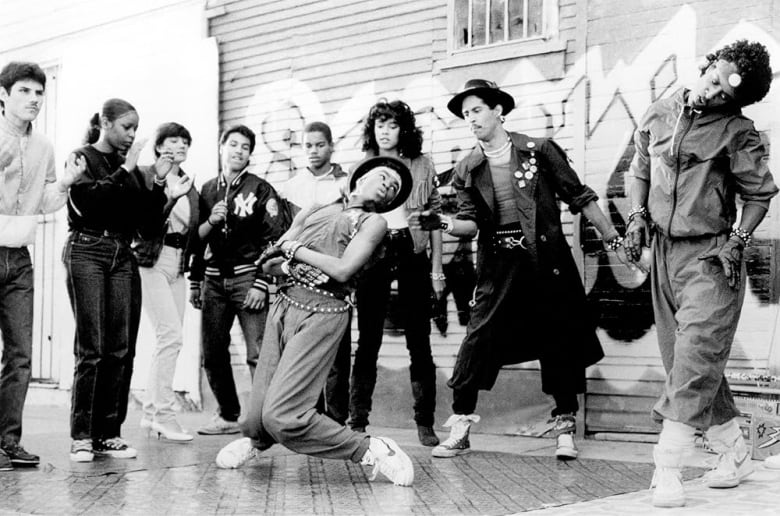
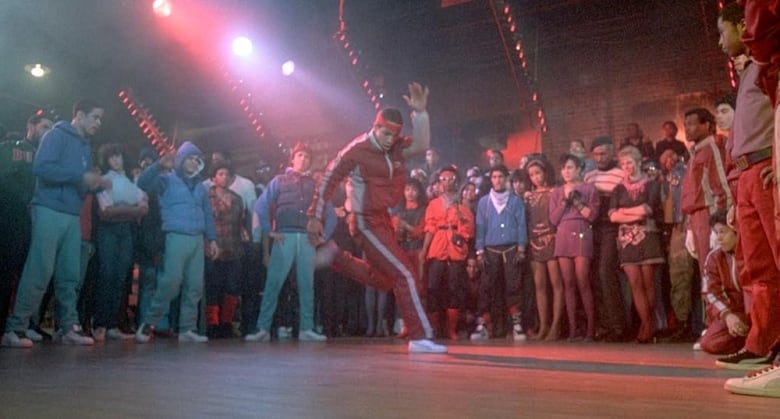
Even though breakdancing culture was bubbling up in New York City in the 1980s, it wasn’t until the art form was featured in these two movies that breaking really began to get mainstream attention.
Like many who watched Breakin’, I was all in after seeing it. I remember immediately searching for a cardboard box big enough to be a “dance floor” so I could attempt some of the moves — badly. And it wasn’t only the moves that fascinated me; I became obsessed with the style.
In a memorable Gene Kelly–esque scene, one of the movie’s main characters, Turbo (played by Michael Chambers), dances with a broom while wearing Nike Blazer high-tops and baggy, cuffed track pants — a combination that feels current to this day.
That same year, the Rock Steady Crew — one of the original legendary B-boy crews — appeared in one of Beat Street’s memorable dance battle scenes. The quintessential fits included down-vest-and-hoodie combinations and classic matching nylon tracksuits worn with Puma Suedes. I personally became obsessed with the film’s half-zip pullovers. K-Way nylon jackets that folded into a waist pouch were very popular at the time, and I wore my navy version constantly.
The lasting impact of those movies on street style can’t be overstated; retro matching tracksuits have even had a resurgence of late.
1990: International breakdance competition Battle of the Year launches in Germany
[embedded content]
Battle of the Year (BOTY) was one of the world’s first big breaking competitions. Its inaugural event, then called the International Breakdance Cup, was held in 1990, with a handful of crews entered.
Things have changed, and now BOTY is so big that crews have to qualify to enter. It has since become a truly international competition, with many referring to it as the World Cup of B-boy-ing. It served as the inspiration for the film Battle of the Year, which was released in 2013.
Unlike the cypher (solo) battles of today, the early battles were full squad-on-squad. This meant a lot of matching nylon jumpsuits and track jackets, the latter of which look a lot like this one from London-based designer Martine Rose’s Spring 2024 collection.
1997: Music producer Jason Nevins remixes Run-D.M.C.’s classic track It’s Like That
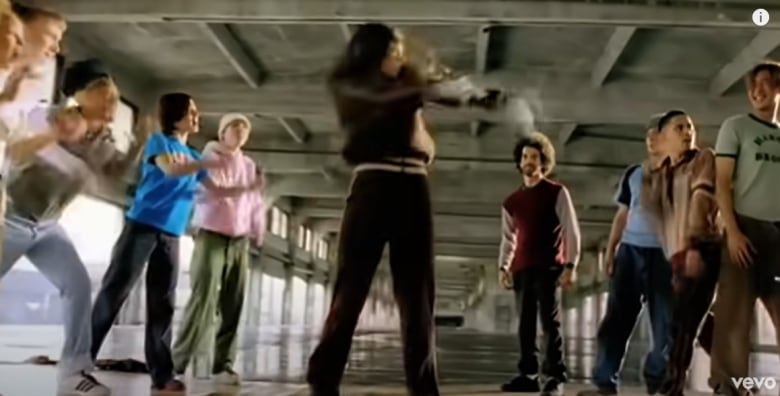
While breaking and B-boy culture had more influence than ever in the ’80s and early ’90s, I’d say the art form failed to retain mainstream attention in the mid-’90s. (It was still thriving, mind you, just out of the mainstream spotlight.) That is until 1997, when Jason Nevins remixed Run-D.M.C.’s 1983 song It’s Like That, and the band released a video depicting B-boys and B-girls engaged in a cypher battle.
The video led to renewed interest in breaking. I remember having this track on repeat all day — great song, legendary music video! I also remember thinking the dancers’ styles in the video seemed modern for the time. It was all about fresh white Adidas Superstars or coloured Gazelles. The combination of baggy or flared brown or khaki pants with a fitted ringer or baseball tee was definitely inspired by the popular rave and techno dance parties of the late ’90s.
2006: The movie Step Up is released
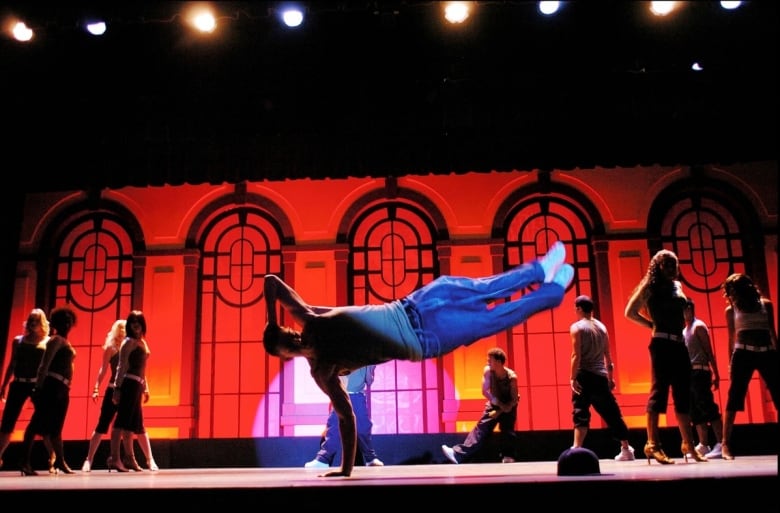
Long before his Magic Mike days, a young Channing Tatum showed off some pretty impressive breaking moves in 2006’s Step Up. His character, Tyler Gage, showcased ultra-wide jeans and sweatpants paired with Nike Air Force 1 Lows — and it’s a look that’s endured. To say he would fit in on a modern-day Balenciaga runway would be an understatement.
2008: The Jabbawockeez are crowned the winners of America’s Best Dance Crew
Arguably one of the most famous B-boy crews in the world, the Jabbawockeez exploded onto the scene during the first season of the dance reality show America’s Best Dance Crew. Their beautiful and imaginative choreography, combined with their explosive breaking acrobatics, brought B-boy dance style back into the mainstream, showcasing the art form to the public on a scale similar to that of those iconic ’80s breakdancing movies.
When it comes to fashion, the Jabbawockeez pay homage to the early B-boy styles, with choices like matching tracksuits and retro bucket hats. Bucket hats have seen a resurgence over the last few years, featuring in designer collections from Marni and Prada, and in everyday streetwear.
2010s to today: Breakdancing’s collab with fashion becomes hands-on
Many of the early style trends in breaking have persisted in some form to this day. And today, breakdancers’ influence on fashion is not only large — it’s more direct.
In 2010, identical twin brothers Larry and Laurent Bourgeois, better known as Les Twins, burst onto the scene when a video of their performance during the San Diego leg of the World of Dance tour went viral. Their unique hip-hop dance style, which borrows many breaking moves, has earned them over 50 million views, catapulting the French duo to global fame. They went on to tour with superstars like Jason Derulo, Missy Elliott and Beyoncé and won the Jennifer Lopez–produced World of Dance competition in 2017, which sent their profile into the stratosphere.
The twins embody French street style, bringing their swagger to the stage whenever they perform. I love how they extend that same energy to their massive influence on fashion. They’ve worked with global brands like Chanel, Emporio Armani, H&M, Versace and, more recently, Hennessey. Adding to their street cred, the pair helped design a special-edition Air Jordan 1 High in 2019.
These days, the relationship between breaking and fashion flows both ways. The breakdancers of today have taken the early style cues from the original B-boys and updated them utilizing today’s style trends. Pants are fuller and wider than ever before, like this pair from JW Anderson. At the same time, brands are serving breakdancers, not just borrowing from them. Nike recently unveiled the Nike Jam — the first sneaker created for breaking, and evidence that the sport’s relevance continues to grow.
Today, tomorrow: Breaking into the Olympics will mean a new level of style influence
With the eyes of the world on breaking once again, and for the first time, at the Olympics, I have no doubt it’ll have another explosive and positive impact on fashion and a new generation of B-boys and B-girls. After all, breaking’s stars — and their styles — have already aligned.
Canadian B-boy Philip Kim, who competes as Phil Wizard, recently became the first breaking athlete to qualify for Canada’s Olympic team at the Paris Games following his gold medal win at the Pan American Games in Santiago, Chile, last year. Kim is not only one of the best breakers in the world but also one of the most stylish — and he has the fashion magazine spreads to prove it.
From his all-white Lululemon fit with Nike Zoom Vomero 5s at the Red Bull BC One competition to this ultra-slick, monochromatic look with a black tank, wide-leg trousers and clean Salomon sneakers, Kim’s looks reveal a sense of style that rivals his incredible breaking skill.
His fits also make practical sense: wide-volume pants complement his footwork and accentuate his acrobatics, while fresh kicks are the icing on his B-boy swag cake.
Another stylish breaker to keep your eye on is Japan’s Shigeyuki Nakarai, a.k.a. Shigekix. The 2020 Red Bull BC One World Final champion and gold medallist at the 2023 Asian Games in Hangzhou, China, has style for days and rocks B-boy fits in a super clean, almost preppy way.
And it seems more and more B-girls and B-boys are serving as creative muses and collaborators around the world.
It’s only fitting that breaking’s Olympic debut will happen in Paris, the fashion capital of the world. (Official debut, that is. Fun fact: The Majestic Visual Break Dancers crew performed behind Lionel Ritchie at the closing ceremony of the 1984 Olympic Games in Los Angeles.)
There are few sports where the swagger and style of the athletes is built right into the competition, so as breakdancing makes its first foray into the Olympics, my advice would be just to sit back and enjoy the show — and the fits!
This post was originally published on this site be sure to check out more of their content.





